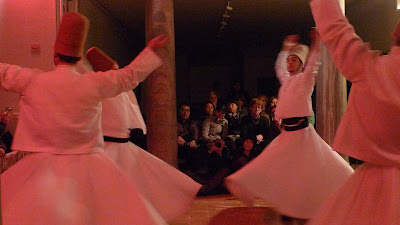







'The site “Österreichischer Platz“ is situated on the edge of Stuttgart’s city center.
Its function has not changed a bit in the last 40 years, it is surrounded by and isolated through highways, it is used as a parking lot and also as a meeting point for dubious people. The people have almost forgotten about it somehow after being in a bad state for years.
But now the rhythm as well as the character of the surrounding highway will be interrupted by 55 piled-up
sea containers
For a time frame of five to ten years a temporary tower should revaluate the district, should create an attractive magnet and it should also be a place where different, lively and diverse forms of use will have a home for some time. As the project will only be temporary, it will be build out of shipping containers which will be a construction element as well as it will create new space. In addition, the containers allow a financially interesting and short-term realization of the project and you can also reuse and constrcut on the plaza very fast again.
The building will be divided into two parts. There will be a courtyard that will be isolated from traffic and noise and the high-rise tower which can be scaled by an artificial path around it as well as by stairs that go directly on top. The building is completely open to the public.
There will be many differently designed zones: the green duplex that will host a park, terraces of different sizes, niches and stairways and it will also be the home of various institutions like the capsule hotel, the Bürgerbüro (the local administration) to the lovtainer. With all these different options the lotto-tower as a whole will offer possibilities for all kind of needs. It will be similar to Jacques Tati’s Autoplay or Ali Mitgutsch’s Wimmel Bilder – there will be much to explore.
The tower will be topped by a sphere which will host the drawing of the lotto numbers."
Event Architecture(from http://vacantplots.wordpress.com/2009/03/17/event-architecture/)
Requiring the juxtaposition of all that is fixed, event architecture has developed from an architecture pursuit into a new tactic of spatial determinism. The architect designs the fantastical program as part building, part carnival, part park; its spectacle, uniqueness, and marketability derived from its dense verticality. Whereas a park or carnival exists horizontally, event architecture condenses activity. The architect’s fetish for density played out by event architecture’s forceful interlocking of social interaction and land-use contestation.



(This is my question for government guild for the city's public space and the answer from IMP
Is there any policy or rules to administrate the city public space from the government, such as for streets, squares which are filled with all kinds of informal activities. Is the government encourage such phenomenon or want to get it into control? (Kamusal alanların yönetimi nasıl? Yerel yönetim bunu control altına almak istiyor mu?)
There is a specific and very comprehensive study currently being carried out for Developing the principles for the management of the UNESCO World Heritage Listed area of Historic Peninsula. This study is to shape a set of specific policy or rules to administrate, preserve and maintain the historic city public spaces. The management of the rest of the public spaces are subject to the İstanbul’s “Urban Development” Guidelines. İstanbul metropolitan government and the district municipalities shares the responsibilities to apply the rules for managing and controlling the public spaces and all the informalities in public spaces. )






 sketches of all kinds of urban life aspects in istanbul. those vivid scenes always seem exciting to me, i can see their playful heart,their desires to express, their struggles of survival, and their dreams of better life. Istanbul people have the talent to celebrate their life with unlimited creativity.those activities' happening sometimes redefine the places, filling the unprogrammed public spaces, or represent a kind of relation between human and physical environment.
sketches of all kinds of urban life aspects in istanbul. those vivid scenes always seem exciting to me, i can see their playful heart,their desires to express, their struggles of survival, and their dreams of better life. Istanbul people have the talent to celebrate their life with unlimited creativity.those activities' happening sometimes redefine the places, filling the unprogrammed public spaces, or represent a kind of relation between human and physical environment. 

 my experience of watching whirling dervishes performance was begin in an museum hall,with some old leader's portraits hanging on the wall.
my experience of watching whirling dervishes performance was begin in an museum hall,with some old leader's portraits hanging on the wall. the traditional musical ceremony was opening show.
the traditional musical ceremony was opening show.

